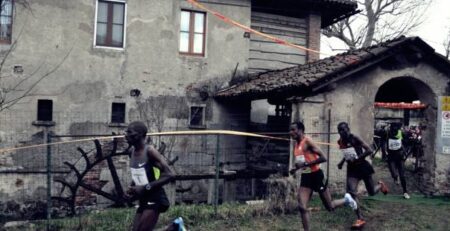Yes, repetitions are important.
Have you trained your physique sufficiently to withstand the distance and, since appetite comes with eating, do you now want to try to increase the pace?
Or do you want to delay the ever-unpleasant feeling of breathlessness (and deep hatred) that arises when your sadistic training partner (or any opponent) increases the speed in order to put his nose to the front and brag to his friends that he has beaten you in the hearty Sunday race?
You need not worry: for all of you there is a solution. And it’s not about poisoning the unfortunate!
Just ‘simple’ repetitions are enough.
But what are repetitions in essence?
Distances (or time intervals) repeated several times. At a more or less elevated pace. With a more or less prolonged recovery between one and the other. Put like that, it may seem very vague. So let’s look at some practical examples.
Preparing for a race over a medium/long distance
To prepare for a race over a medium/long distance (from half a marathon), you will need to consider ‘long’ repeats: from 1000 metres upwards. The preferred terrain in this case will be the road: arm yourself with a GPS watch capable of marking the distance covered. The number of repetitions will depend on the distance of the race to be prepared for: e.g. for a half marathon an 8×1000 or a 4×2000 will be sufficient. The pace to be kept will be in relation to your training condition, however, calculate that it should be faster than the pace to be maintained later in the race. And, of course, that you must‘keep up’ for all the repeats and not just the first one!
For a marathon, on the other hand, you should prefer distances from 2000 metres upwards. A good workout in this case could be a 5×3000 or more.
Recovery can be done simply by resting (or in souplesse) or by running at a slow pace: in this case we speak of active recovery, which is very useful for getting the body used to variations in rhythm, and the speed of the repetition can also be slightly slower.
Preparing instead for a race over a shorter distance
To prepare instead for a race over a shorter distance (up to 10 km), shorter repetitions of up to 1,000 metres are preferable. In this case, training on the road will be fine, but also on the track. The number of repetitions will almost always be more than 10. For example, to prepare for a fast 10 km, a good workout could be a 10×500 or a 15×400, while to seek pure speed you could opt for even shorter distances, such as 200 metres (15-20×200). The rhythm to be kept will certainly be faster than the ‘long’ repetitions, as theobjective here is to loosen up the legs, lengthen the stride and get the body used to speed.
In periods of strengthening and winter preparation for the following season, uphill repetition sessions can be carried out, which are useful for stressing and increasing the leg muscles, which will be very useful in view of the summer and finishing for spring and summer races. Uphill repeats can also be either short (a hundred or so metres to be run at full speed, at least ten times) or longer, up to a kilometre (to be done at a high but constant pace). In the latter case, you can stop at 5 repetitions. You can also transform the strengthening work with a series of stretches at the end of the workout, just so that you don’t remain with ‘packed’ legs and regain some freshness.
Rhythm variations, knownas ‘fartlek’ in technical jargon
Finally, there are the pure rhythm variations, called‘fartlek‘ in technical jargon, a Swedish word meaning ‘game of speed’.
They consist of running intervals performed at varying paces: e.g. 2 minutes of fast running, 3 minutes of slow running, 20″ of sprinting, etc. The essential characteristic of the fartlek is that it is a very free form of training: the distance or duration of the interval is open and does not always have to be the same, but rather it is preferable for it to change constantly to avoid monotony. One of the objectives of fartlek is, in fact, fun. It should be done on the road, possibly on an undulating course, so that it is a good, muscular and complete workout. The duration of a fartlek session should be neither too short nor too long, a good estimate would be between 20 minutes and an hour of running. Don’t look too much at the gps, as mentioned the important thing is to vary the pace by feel and without fixed intervals and above all on a varied route with climbs, descents and flat portions.
All these we have seen can be considered quality training and should therefore be dosed in order not to exaggerate with fatigue and to arrive in good shape for the appointments you have set yourself. Never exceed the threshold of one or two quality workouts per week. Unless your opponent is Mo Farah.
Now that you know a bit more, you have all the cards in your hand to achieve your goals: to speed up or simply beat your obnoxious opponent, but above all to get better and vary your weekly alliance programme.
And last but not least, to push your limits. And have fun.
Happy repeats to all!













